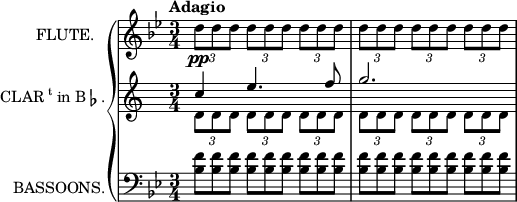Flute in "St. Paul"
Symphony. The finale of this symphony appropriately opens with the German chorale "Eine feste Burg ist unser Gott" in G major (in its originalHis
Symphonies form, and not as used by Bach and Meyerbeer) on the first flute absolutely alone. "The grand old air thus heard alone and on one instrument comes like a response from the skies [to the prayer in the preceding andante], and its introduction is perhaps the most impressive that could be conceived." In the andante to the "Italian" Symphony Mendelssohn uses the soft notes of the middle register to produce a feeling of desolation, and by way of contrast gives very lively solo parts to the two flutes in the subsequent "Salterello."
Next to his use of the flute to produce an impalpable, sylph-like effect ("He brought the fairies into the orchestra and fixed them there."—Sir G.His use of
the Flute Grove), Mendelssohn's most outstanding feature in the treatment of the instrument is his use of rapid, iterated chords, often in triplets, on flutes and other wood-wind instruments—a device previously used by Bach, Beethoven, and Weber, and
Mendelssohn.—St. Paul, "Jerusalem."

157
